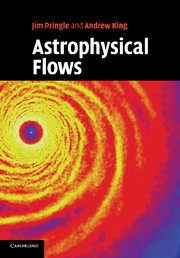Book contents
- Frontmatter
- Contents
- Preface
- 1 The basic fluid equations
- 2 Compressible media
- 3 Spherically symmetric flows
- 4 Stellar models and stellar oscillations
- 5 Stellar oscillations – waves in stratified media
- 6 Damping and excitation of stellar oscillations
- 7 Magnetic instability in a static atmosphere
- 8 Thermal instabilities
- 9 Gravitational instability
- 10 Linear shear flows
- 11 Rotating flows
- 12 Circular shear flow
- 13 Modes in rotating stars
- 14 Cylindrical shear flow-non-axisymmetric instability
- References
- Index
1 - The basic fluid equations
Published online by Cambridge University Press: 05 June 2012
- Frontmatter
- Contents
- Preface
- 1 The basic fluid equations
- 2 Compressible media
- 3 Spherically symmetric flows
- 4 Stellar models and stellar oscillations
- 5 Stellar oscillations – waves in stratified media
- 6 Damping and excitation of stellar oscillations
- 7 Magnetic instability in a static atmosphere
- 8 Thermal instabilities
- 9 Gravitational instability
- 10 Linear shear flows
- 11 Rotating flows
- 12 Circular shear flow
- 13 Modes in rotating stars
- 14 Cylindrical shear flow-non-axisymmetric instability
- References
- Index
Summary
The subject of this book is how the matter of the visible Universe moves. Almost all of this matter is in gaseous form, and each gram contains of order 10 particles (atoms, ions, protons, electrons, etc.), all moving independently except for interactions such as collisions. At first sight it might seem an impossible task to describe the evolution of such a complicated system. However, in many cases we can avoid most of this inherent complexity by approximating the matter as a fluid. A fluid is an idealized continuous medium with certain macroscopic properties such as density, pressure and velocity. This concept applies equally to gases and liquids, and we shall take the term fluid to refer to both in this book. The structure of matter at the atomic or molecular level is important only in fixing relations between macroscopic fluid properties such as density and pressure, and in specifying others such as viscosity and conductivity.
Describing a medium as a fluid is possible if we can define physical quantities such as density ρ(r, t) or velocity u(r, t) at a particular place with position vector r at time t. For a meaningful definition of a ‘fluid velocity’ we must average over a large number of such particles. In other words, fluid dynamical quantities are well defined only on a scale l such that l is not only much greater than a typical interparticle distance, but also, more restrictively, much greater than a typical particle mean free path, λmfp.
- Type
- Chapter
- Information
- Astrophysical Flows , pp. 1 - 16Publisher: Cambridge University PressPrint publication year: 2007



